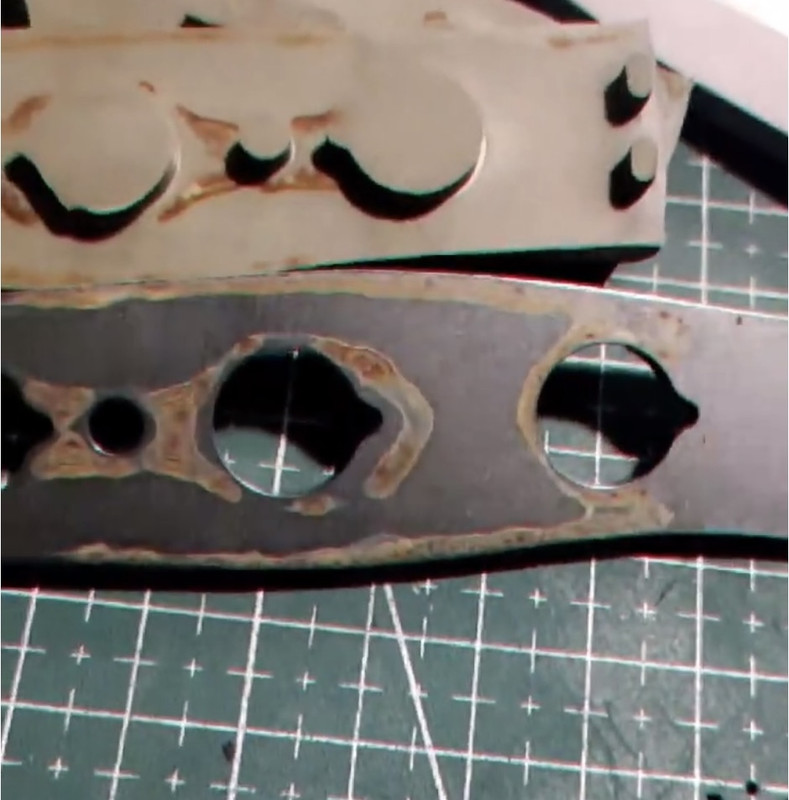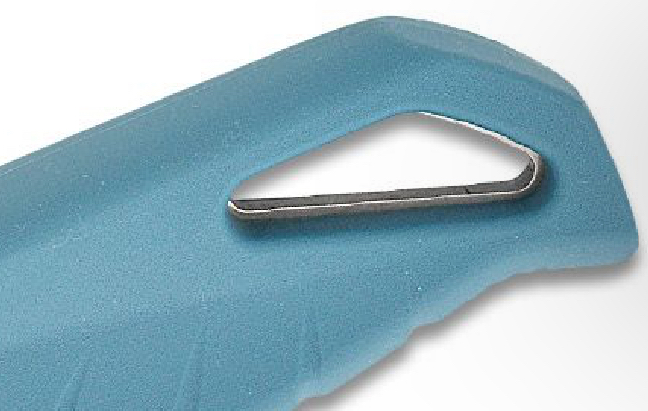The handle does not seal against the steel, and caused corrosion under the handle.
Brown fluid (rust) could be squeezed out from the handle.
It was cut open to be examined.

There is another thing I don’t understand, why exposed steel at lanyard hole?
This creates more steel-santoprene junction area, increasing risk of leakage and makes it alot harder trying to seal all the gaps with sealant.

My speculation is that the purpose of this is to demonstrate that the knife has a full tang, under the influence of the full-tang fallacy.
This is not worth it, it creates a functional problem.
A simple solution would be not to expose the tang at the lanyard hole, then, the handle could be easily made water-tight with a little sealant at the handle-blade junction.
If for marketing purpose, you still want the customer to know that the knife has a full tang, print a x-ray graph of the knife on the packaging, outlining the tang profile.
This should be a simple solution that is best for both sides.
Ideally, elastomer should be injection molded onto a layer of hard polymer, which is directly molded on to the steel, like how Mora handles are made.
This way, the tang would be free from corrosion, and the hard polymer can form a more durable/rigid guard.
Brown fluid (rust) could be squeezed out from the handle.
It was cut open to be examined.

There is another thing I don’t understand, why exposed steel at lanyard hole?
This creates more steel-santoprene junction area, increasing risk of leakage and makes it alot harder trying to seal all the gaps with sealant.

My speculation is that the purpose of this is to demonstrate that the knife has a full tang, under the influence of the full-tang fallacy.
This is not worth it, it creates a functional problem.
A simple solution would be not to expose the tang at the lanyard hole, then, the handle could be easily made water-tight with a little sealant at the handle-blade junction.
If for marketing purpose, you still want the customer to know that the knife has a full tang, print a x-ray graph of the knife on the packaging, outlining the tang profile.
This should be a simple solution that is best for both sides.
Ideally, elastomer should be injection molded onto a layer of hard polymer, which is directly molded on to the steel, like how Mora handles are made.
This way, the tang would be free from corrosion, and the hard polymer can form a more durable/rigid guard.
